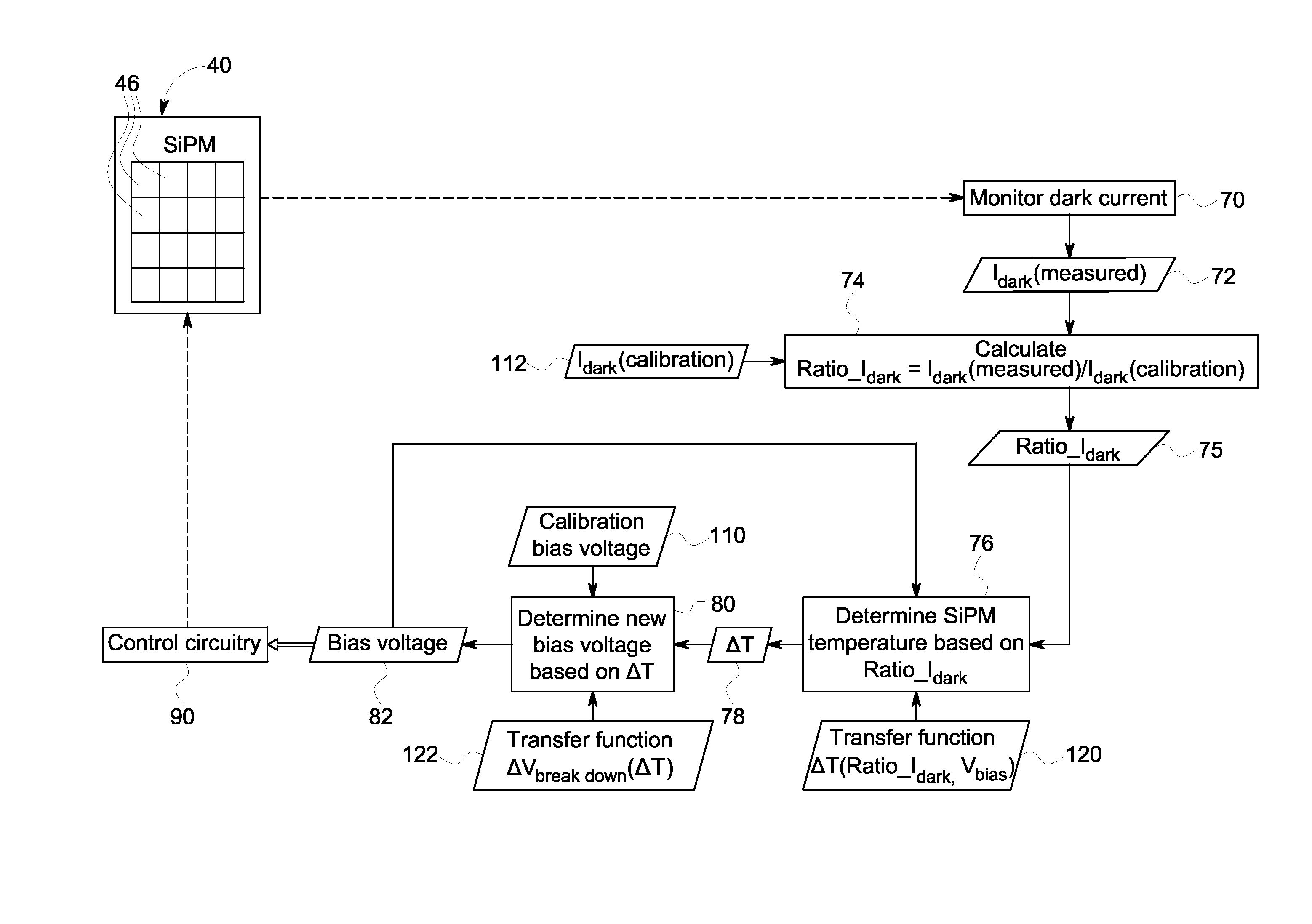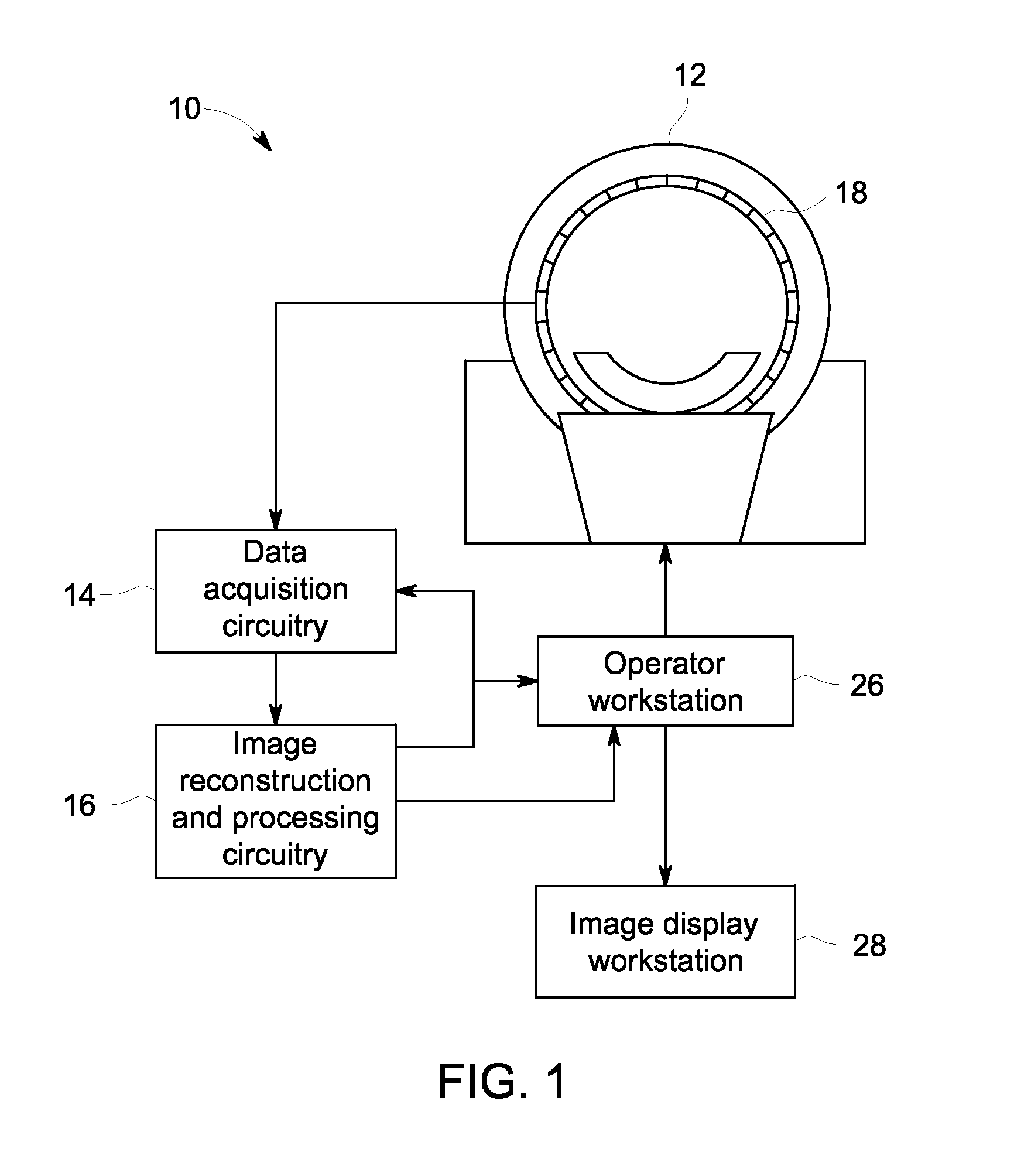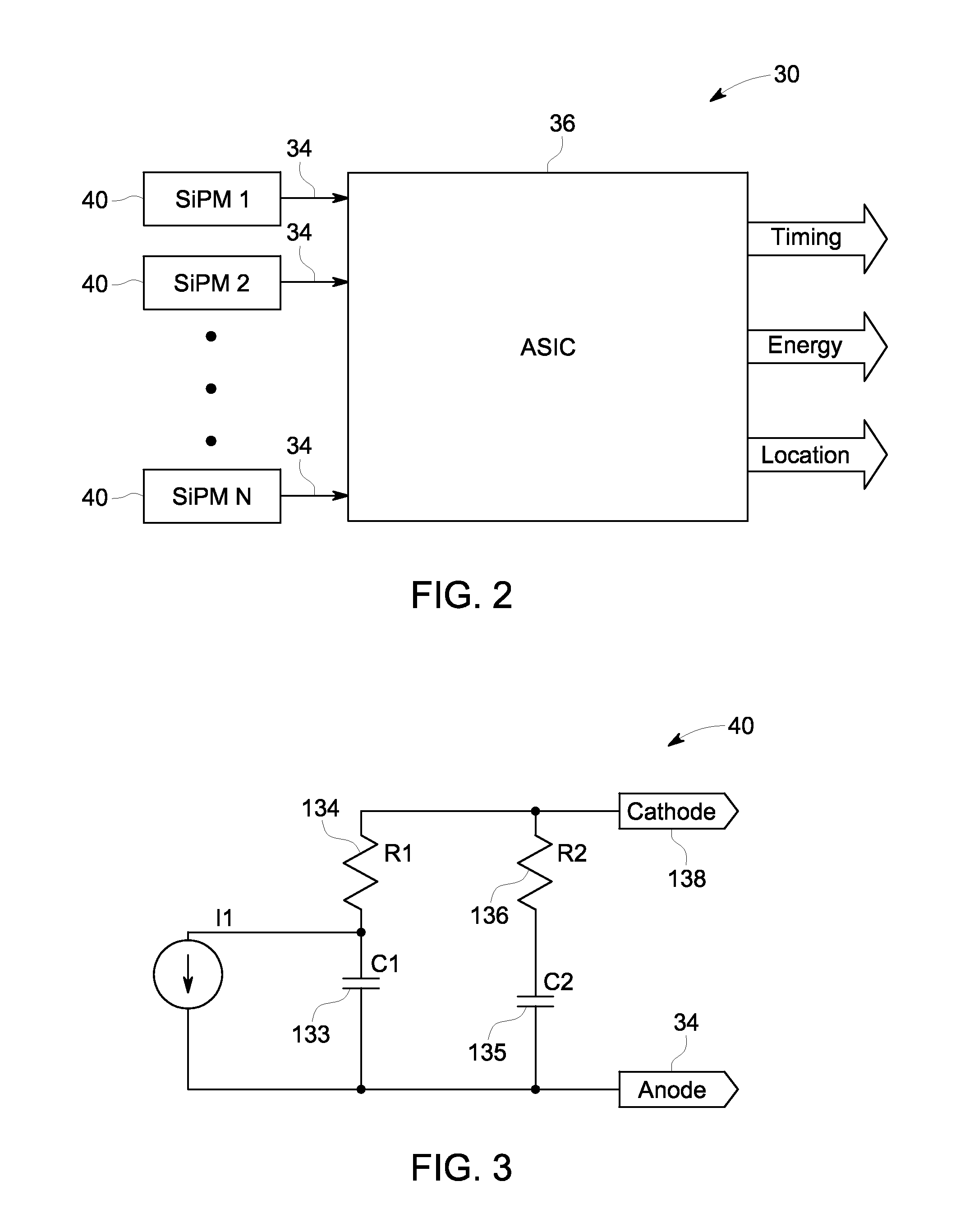System and method for compensating temperature gain variation in radiation detectors
- Summary
- Abstract
- Description
- Claims
- Application Information
AI Technical Summary
Benefits of technology
Problems solved by technology
Method used
Image
Examples
Embodiment Construction
[0022]In accordance with the present disclosure, approaches for improving the usefulness of silicon photomultipliers (SiPM) in conjunction with radiation detection are described. As discussed herein, various radiation detection approaches exist that employ SiPMs incorporating an array of microcells (e.g., an avalanche photodiode (APD)) operating in Geiger mode. The breakdown voltage (Vbr) of the microcell, depends on the temperature. For example, the typical temperature coefficient is about +30 to +60 mV / ° C. for various APD structures. The SiPM works above the breakdown voltage in Geiger mode and the associated gain is proportional to the over voltage (Vov). As a result, the gain at a given microcell depends at least in part on temperature due to the dependence of breakdown voltage on temperature. For a typical over voltage of 2 V, this translates to a gain temperature coefficient of approximately −2% to −3% / ° C. However, knowledge of the amount of gain present in the SiPM at a giv...
PUM
 Login to View More
Login to View More Abstract
Description
Claims
Application Information
 Login to View More
Login to View More - R&D
- Intellectual Property
- Life Sciences
- Materials
- Tech Scout
- Unparalleled Data Quality
- Higher Quality Content
- 60% Fewer Hallucinations
Browse by: Latest US Patents, China's latest patents, Technical Efficacy Thesaurus, Application Domain, Technology Topic, Popular Technical Reports.
© 2025 PatSnap. All rights reserved.Legal|Privacy policy|Modern Slavery Act Transparency Statement|Sitemap|About US| Contact US: help@patsnap.com



